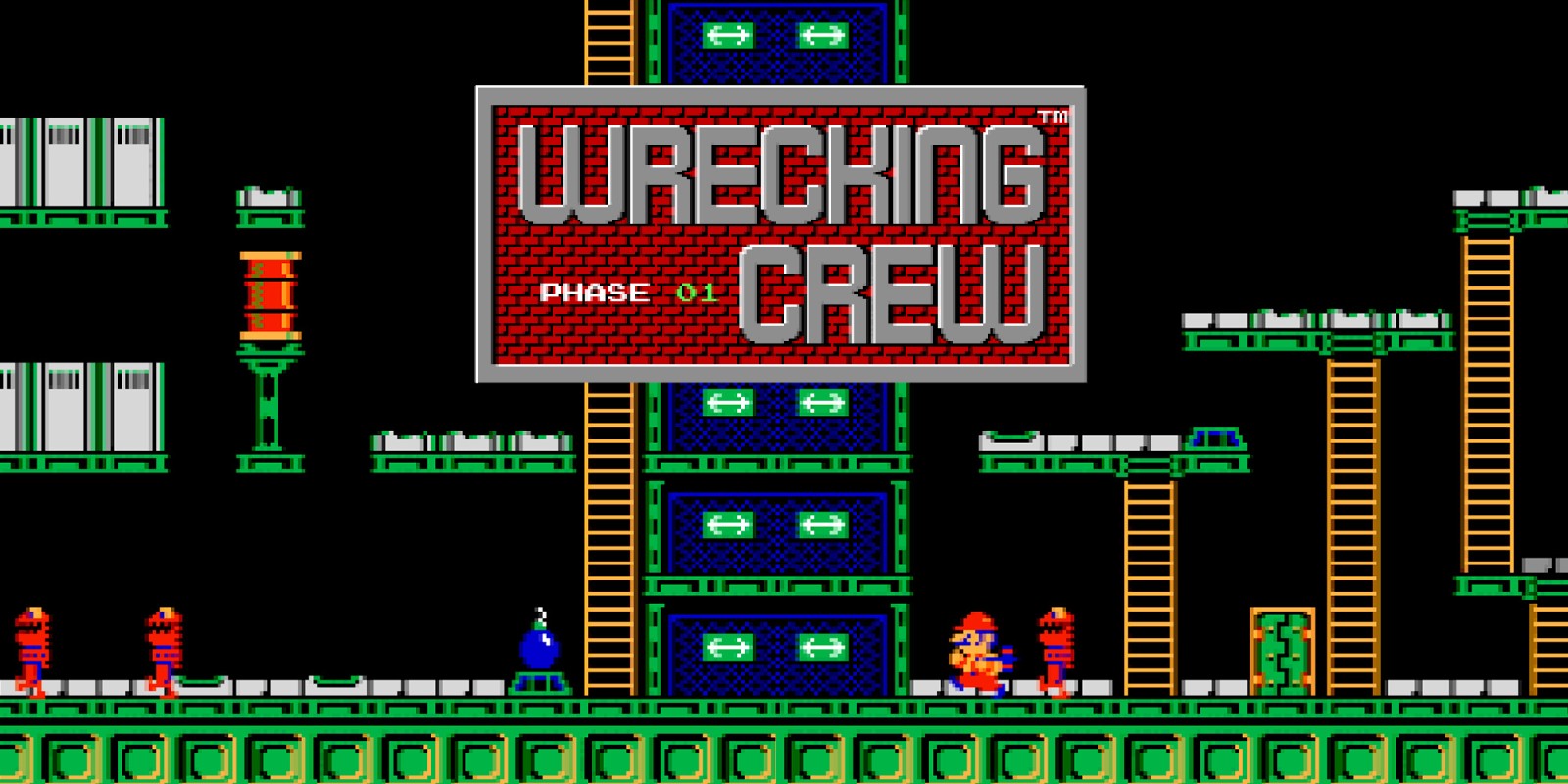3 min to read
Wrecking Crew
Wrecking Crew: Mario's Demolition Adventure in the NES Classic!

The following is the official NES Global Nintendo Virtual Console version of the game.
About the game
Wrecking Crew, a pivotal addition to the Nintendo Entertainment System (NES) library, made its debut in 1985, leaving an indelible mark on the gaming landscape. Developed and published by Nintendo, this iconic title deviates from the traditional platforming adventures associated with the Super Mario franchise, presenting players with a unique blend of puzzle-solving and demolition challenges.
The game’s narrative unfolds in the bustling world of construction sites, where the ever-adventurous Mario assumes the role of a demolition expert. In this departure from the typical heroics of saving princesses and thwarting Bowser’s plans, players find themselves navigating through a series of intricate levels, each posing a distinct architectural puzzle to unravel. The primary objective? Destruction, but with a strategic twist.
Wrecking Crew comprises 100 levels, providing players with a diverse array of challenges that escalate in complexity as the game progresses. Mario, equipped with his trusty hammer, must strategically demolish walls, ladders, and other obstacles to progress through each level. The game introduces a compelling blend of strategy and timing, requiring players to plan their moves meticulously to avoid getting trapped or overwhelmed by mischievous enemies patrolling the construction sites.
What sets Wrecking Crew apart is its dynamic level design, with each stage serving as a unique canvas of construction-themed puzzles. As players ascend through the levels, they encounter an assortment of tools, such as bombs and conveyors, adding layers of complexity to the gameplay. The need for both foresight and nimble execution becomes increasingly apparent, turning what initially seems like a straightforward demolition task into a thrilling and engaging adventure.
The adversaries in Wrecking Crew, led by the persistent Foreman Spike, provide an additional layer of challenge. These foes, determined to impede Mario’s progress, force players to devise creative strategies to outsmart and outmaneuver them. The game’s AI presents a formidable challenge, demanding adaptability and quick thinking from players who aspire to conquer all 100 levels.
Graphically, Wrecking Crew boasts the charming 8-bit aesthetics characteristic of NES classics. The sprites, including Mario and his adversaries, exude a nostalgic charm that encapsulates the essence of gaming in the mid-1980s. The construction site environments, though seemingly simplistic, come alive with vibrant colors and intricate details, contributing to the overall immersive experience.
The sound design of Wrecking Crew is another noteworthy aspect that enhances the gaming experience. The iconic 8-bit tunes and sound effects contribute to the game’s atmosphere, creating a timeless auditory backdrop that resonates with players even decades after its initial release.
Wrecking Crew’s enduring legacy is evident in its influence on subsequent games and its inclusion in various retro gaming collections. Its departure from the conventional Mario formula showcases Nintendo’s willingness to experiment with gameplay mechanics while maintaining the essence of fun and challenge that defines the company’s titles.
In retrospect, Wrecking Crew remains a testament to Nintendo’s ability to innovate within the constraints of 8-bit technology. Its fusion of puzzle-solving and action elements laid the foundation for future games that would explore unconventional gameplay mechanics. For those who experienced the excitement of demolition with Mario on the NES, Wrecking Crew stands as a nostalgic reminder of a simpler yet profoundly captivating era in gaming history.
Resources
- Official page of the game; Cover image credits: https://www.nintendo.co.uk/Games/NES/Wrecking-Crew-754676.html